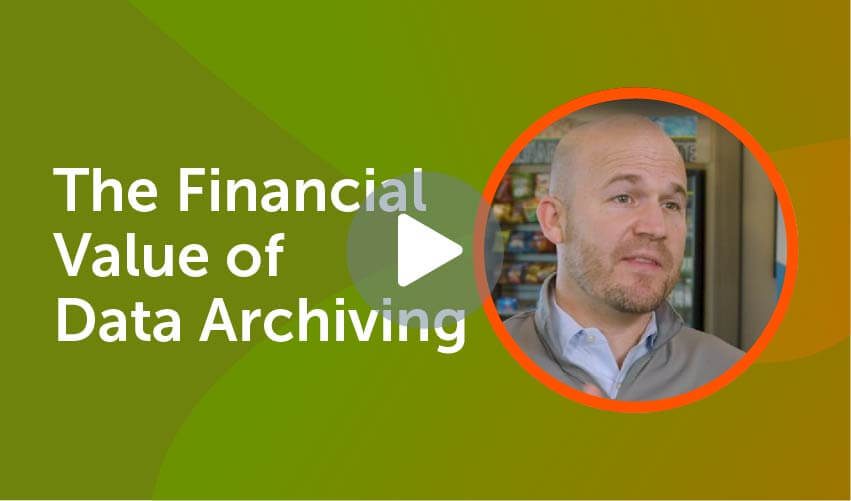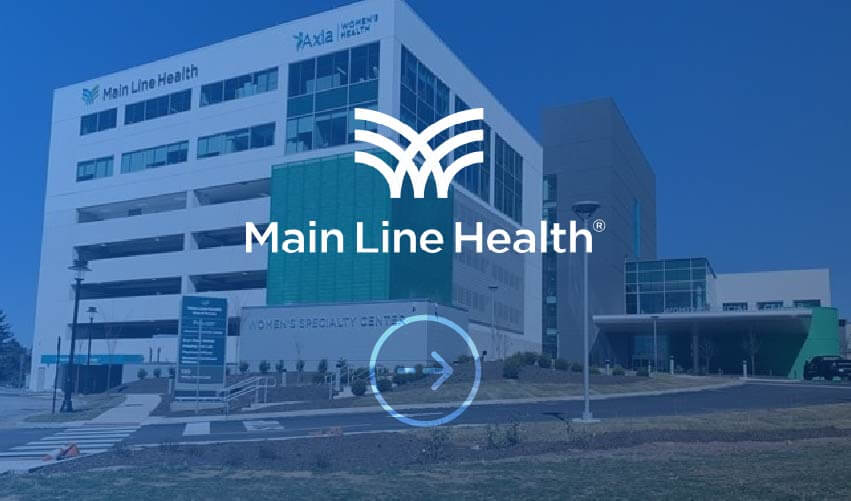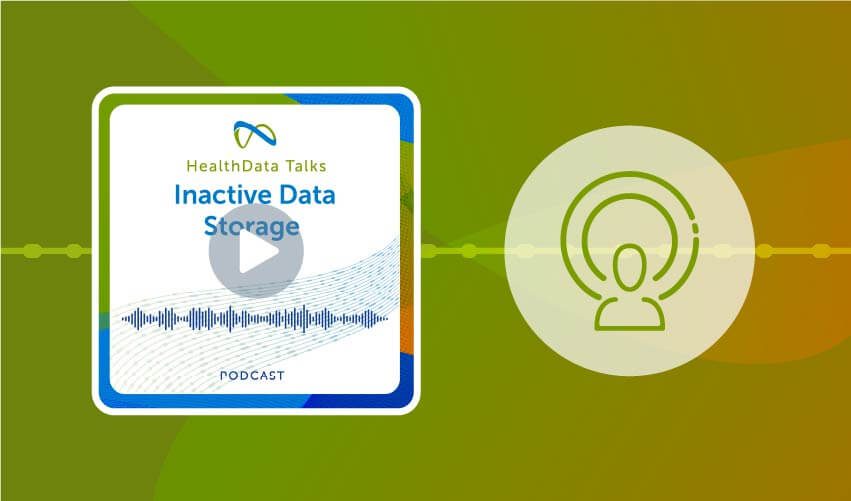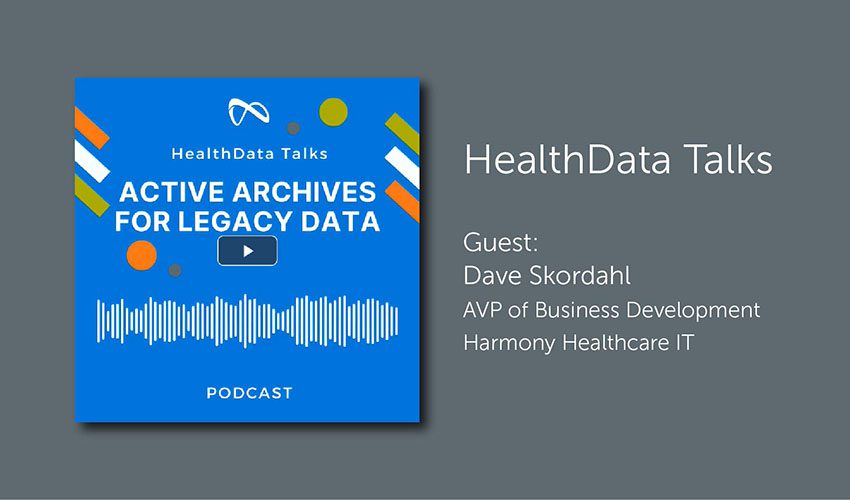HealthData Talks: Archiving Non-Patient-Centric Data
In this episode, Shannon Larkin and Jim Hammer of Harmony Healthcare IT, cover the archival of records at healthcare delivery organizations that are non-patient-centric.
(0:11) The conversation begins with Shannon Larkin introducing Jim Hammer, SVP, at Harmony Healthcare IT, and Hammer gives a background on himself which consists of him leading Harmony Healthcare IT’s product strategy.
(2:00) Larkin starts off by explaining that in the past 15 years, legacy data conversions have focused mostly on patient-based records in ambulatory and acute care settings, but there are additional types of software that help healthcare organizations run smoothly that need archived.
(2:10) Hammer discusses that a healthcare institution is still a business with a ton of systems and records such as ERP & CRM data that needs to be migrated, archived, and retained for retention policies.
(3:20) Hammer gives a specific example of blood bank record retention as an example of non-patient-centric records and notes blood banks have very detailed FDA requirements with a long retention period.
(3:55) Hammer gives another example of non-patient-centric records around a surgical supply vendor that was archived. Harmony Healthcare IT was able to help an IDN find a particular model number on a surgical device that was implanted on a patient that was murdered and the model number in the archive helped solve the case.
(4:23) Larkin asks how the different data field types being stored for patient vs non-patient data types are getting centralized and stored so it works for the users to see what they need to see when they need to see it. Hammer responds that Harmony manages that by what is referred to as “data domains”, which inform the appropriate search screen for that data type (clinical vs accounts receivable vs general financial for example).
(6:05) Larkin and Hammer next discuss employee records and retention, including what healthcare specific regulations govern employee records. Examples discussed are OSHA playing a role in job-related illnesses or injuries, along with drug testing, medical exams must be kept for years, even if termination of an employee happens. An archive is a perfect solution for keeping employee records secure and compliant for long term record retention.
(8:14) Larkin and Hammer discuss brand names that come to mind in terms of non-healthcare applications that are typically archived. On the ERP level, applications include Lawson, Kronos, and Workday, as well as integrated HIS systems such as MEDITECH, CPSI and Healthland.
(10:05) Larkin and Hammer talk about familiarity of the DRIP acronym (Data Rich, Information Poor), how it applies to an archival strategy, and how a solid application rationalization program is important for a successful archive to centralize the legacy data.
Speakers
Host:
Shannon Larkin, VP of Marketing and Business Development at Harmony Healthcare IT, utilizes her 25+ years of health IT experience to connect healthcare organizations with a team of experts that consolidate and modernize data storage to reduce cost and risk.
Guest:
Jim Hammer, SVP at Harmony Healthcare IT, is a Senior Partner and SVP at Harmony Healthcare IT and drives the short and long-term strategy of its products and services. He has over 25 years of experience in practice management and healthcare information technology
Related Resource Links
Explore employee record storage
Learn more about HealthData Archiver®
Follow us
LinkedIn: @Harmony Healthcare IT, the Makers of HealthData Archiver®
Twitter: @HarmonyHit
Ready to connect?
Contact us today to learn more about our healthcare data management solutions.












